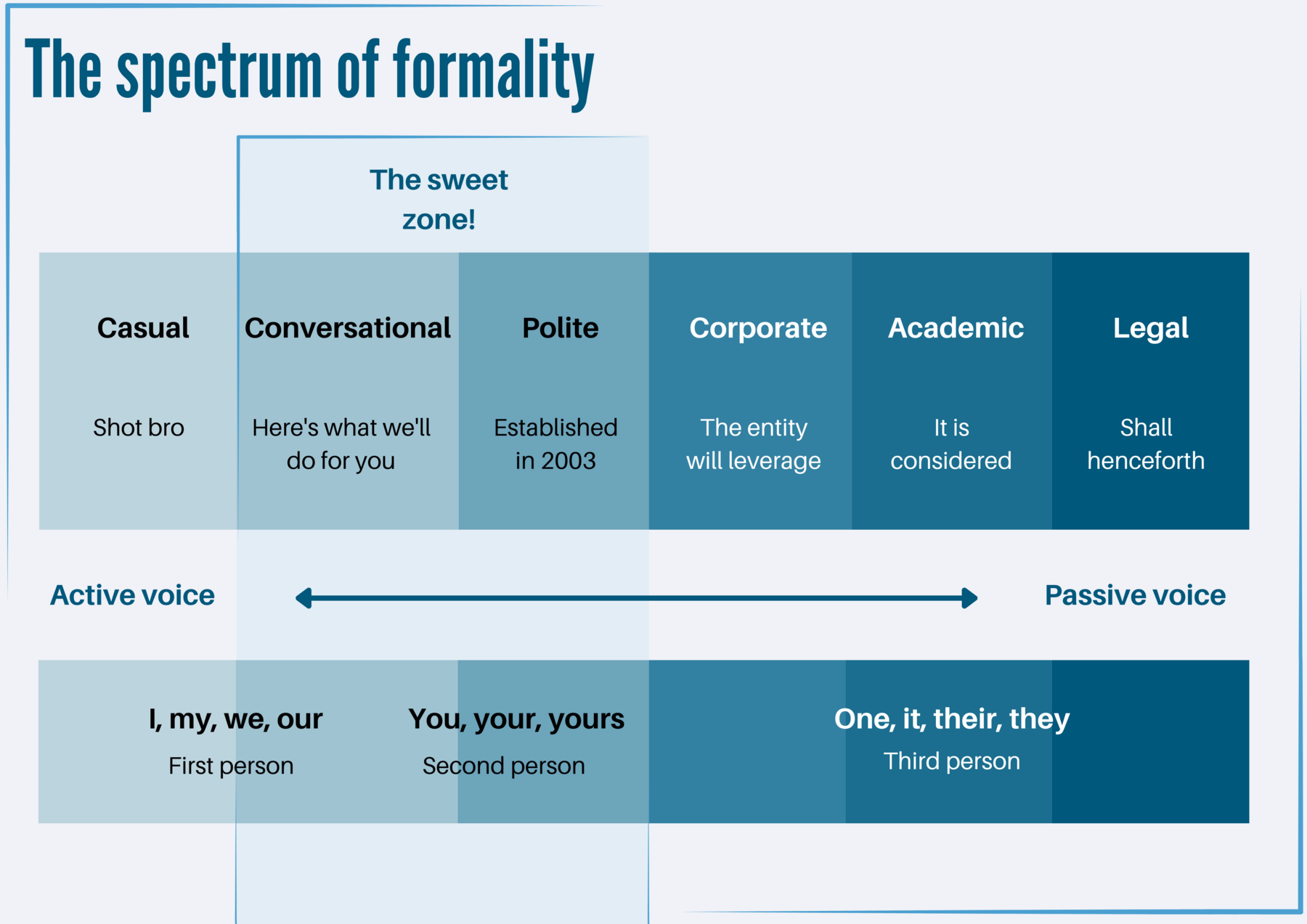Formal and professional are not the same thing
We live in binaries. Our brains love good and bad, right and wrong, black and white.
Tidy, clear, simple. And wrong.
Life is full of what’s in between.
As a trainer, these are two of the biggest binaries I help participants overcome.
Writing can only be formal or informal.
Formal = professional and informal = unprofessional.
The idea that there’s only formal and informal is an oversimplifying trick our brains play on us.
See formality as a scale
Formality is a scale that stretches from 'crass and profane' at one end to 'King James-style biblical' at the other.
This scale is characterised by:
local idioms and in-joke language at one end to extremely obscure terms at the other
short to long sentences
active voice to passive voice.
At work, most people stay within the mid-section of the scale: casual to legal. (This image shows only the mid-section.)
What level of formality should we use for work?
Conversational to polite on the tone scale. That's the sweet zone.
Why not go below conversational?
Your reader might not understand the idioms and short-cut language that’s so familiar to you. They might also think you’re not treating them respectfully.
Why not go above polite?
Your reader will have to work hard to understand you. The big words, long sentences, and passive voice make it hard for them to understand your message. Your writing might impress, but it won’t communicate.
What about when the situation is very serious or tense?
Stay in the sweet zone! People in difficult situations will take offense and react defensively if you go up the tone scale.
Your best chance at keeping things civil is to keep your tone even, polite, and easy to understand. It makes you seem unflappable and confident when you keep your tone in the sweet zone.
But is that professional enough?
Yes it is! Let’s think about what professionalism is. It’s being responsive, competent, accurate, helpful, and pleasant to interact with.
You don’t need to write formally to create those impressions. You need to be easy to understand.
📩 Sign up for regular writing tips – get new tips direct to your inbox every 2 weeks
✨ Check out my Clear and Concise workshop, where I can train your team to sound professional and human without the stiff formality.
✨ Look into the School of unProfessional Writing to learn about plain language at your own pace

